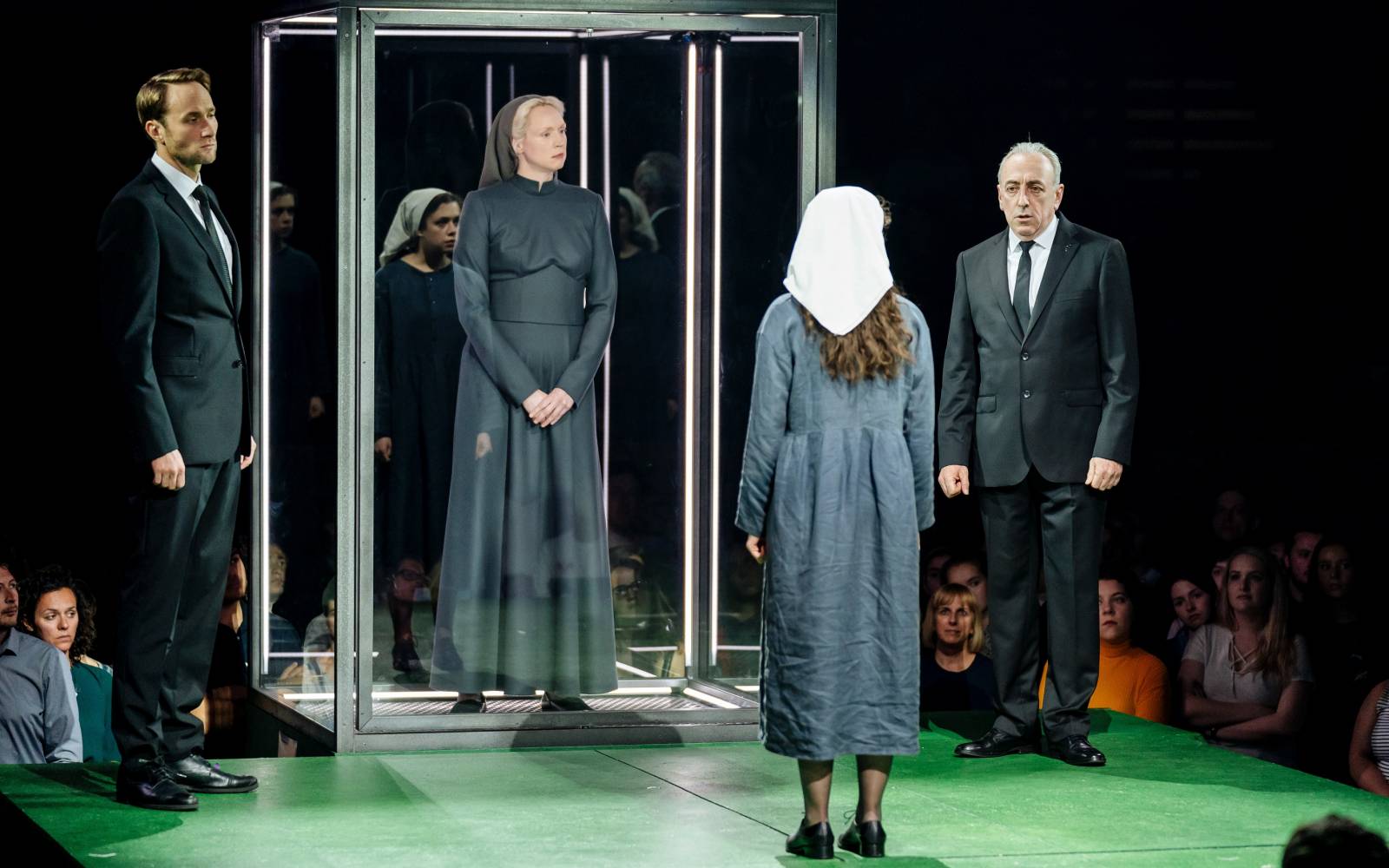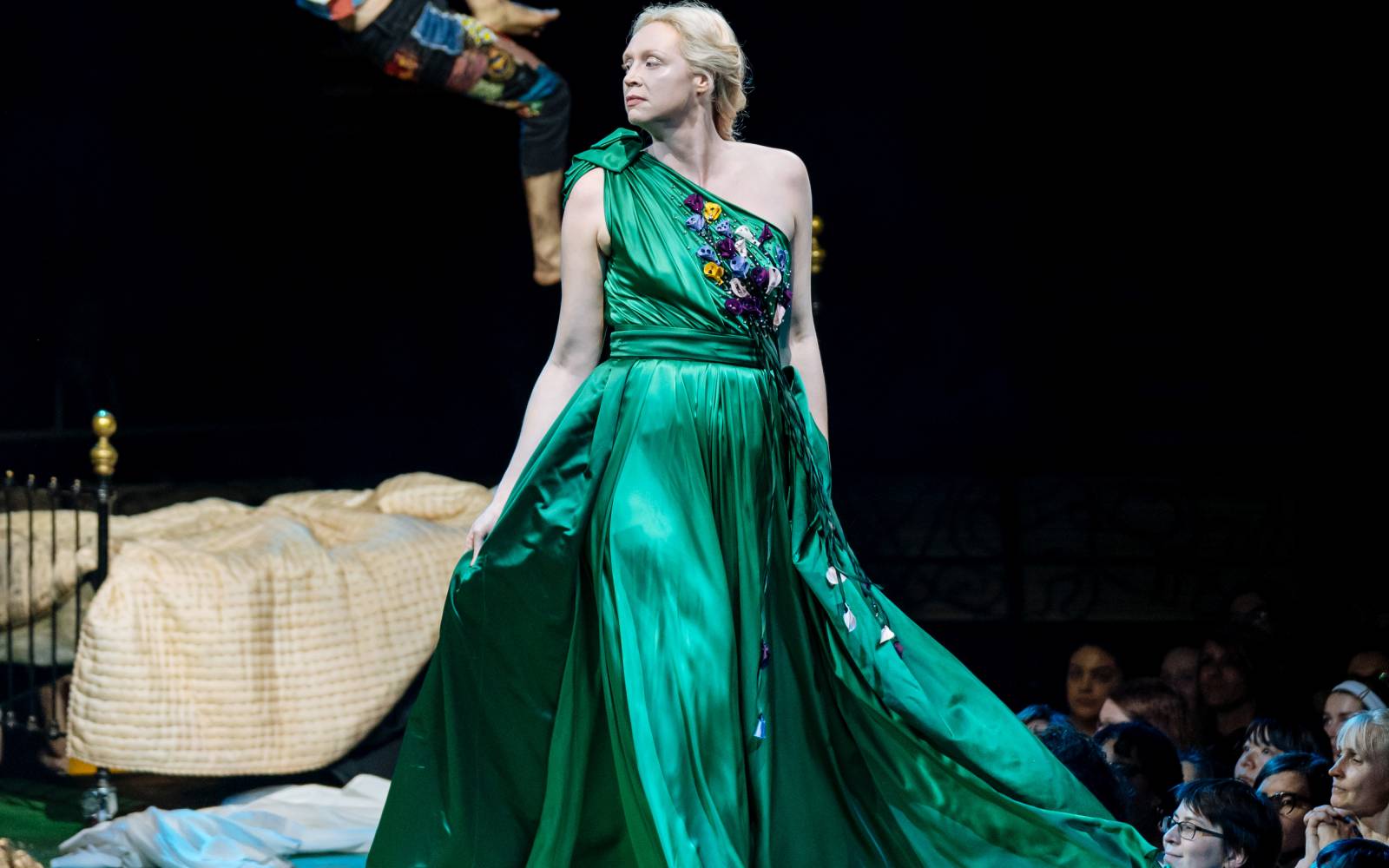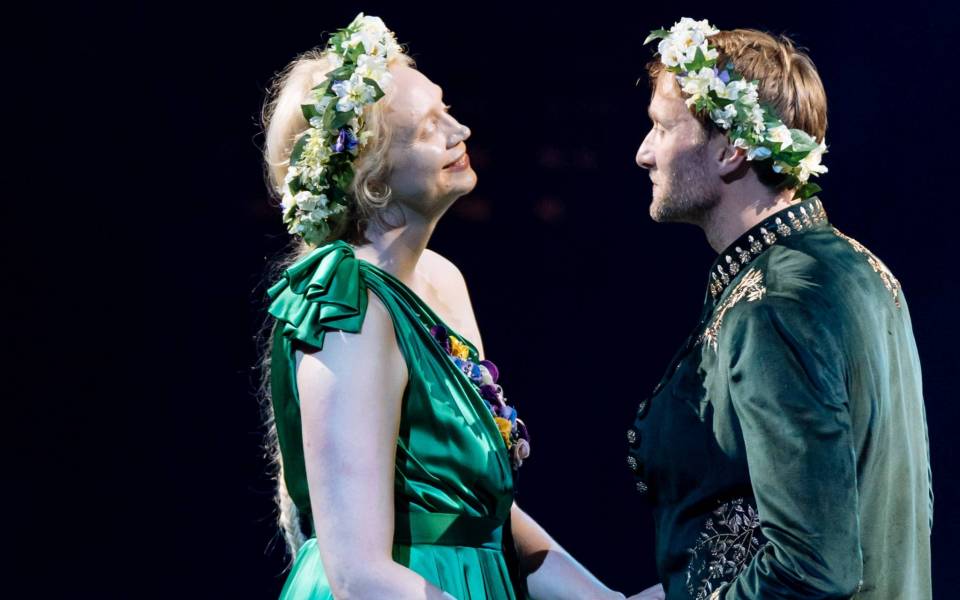
Hippolyta and the Amazons
Edith Hall
At a crucial moment in the final play of Aeschylus’ Oresteia, Athena explains how the rocky ‘Hill of Ares’ or ‘Areopagus’ in central Athens, which rivals her own Acropolis in size, received its name. A terrifying tribe of warlike Amazons had invaded, encamped on the rocky peak, and attempted to set up a matriarchal system of government. Since they were daughters of the war-god, Ares, the hill had been named after him. But everyone in Aeschylus’ audience knew that the Amazons had been subjugated. Theseus, the Athenian king whose reign had ushered in the democracy, had defeated them and even married their leader, Hippolyta. It is their imminent marriage that is being celebrated, ‘with pomp, with triumph, and with revelling’, in Shakespeare’s A Midsummer Night’s Dream.
The persona of the Amazon allowed Early Modern Christians, whose society was organised around even stricter gender protocols than Ancient Greece, an enticing opportunity to ask questions in imagination, fantasy and art that they struggled to address in reality: were characteristics like courage, strength and leadership in reality distributed randomly between the sexes? What would a society ruled by and for women look like? And how would a society in which women wielded political and military power affect relationships involving love and sexuality?
From their earliest appearances in classical culture, Amazons are ambivalent figures. They are mentioned in the Iliad as a hostile tribe against whom important heroes have fought in the past, but their epithet, antianeirai, can be translated either as ‘against men’ or ‘equivalent to men’. The entire history of their representation lurches between these twin poles. Are they primitive, savage man-haters who will never submit to male control, or are they simply ‘manly’, intelligent women who enjoy outdoor pursuits, the equals or equivalents of men, who (if tamed) make ideal wives and embrace patriarchal ‘civilisation’?

Whether to be vanquished or married, the Amazons were always depicted as beautiful and were omnipresent in the art and literature of the Ancient Greeks and Romans. They are unusually tall and athletic (characteristics sought in wives by ancient men) with recognisably female bodies, elaborate outfits with patterned leggings and long sleeves, business-like bows and arrows and felt caps with distinctive ear-flaps. They are usually riding or accompanied by horses; sometimes they talk to their hunting dogs or relish target practice. Scarcely a classical temple did not feature a sculpted scene of battling Amazons, and they were said to turn up to fight in almost every ancient war, both mythical and historical, from the plains of Troy to the Trojan Aeneas’s struggle to conquer Italy and found Rome to Alexander the Great’s furthest eastern campaigns. Ancient historians tell tall tales about the Amazons of Scythia around the Black Sea. Sometimes they are presented as living apart from men, in matriarchal communities which routinely killed off or deliberately disabled baby boys; at other times they are said to fall in love with their neighbours, the Scythians, or to have been tamed into submission by hyper-masculine Greek heroes. But one prevalent modern notion about the Amazons has little foundation in reliable ancient sources—that they cut off one breast to aid their archery. This idea originated in a false etymology of the name ‘Amazon’ from a Greek word for breast (mastos or mazos), when in fact the name Amazones originated in a non-Greek ethnic label—perhaps Scythian or Iranian—of great antiquity.
In the 19th century, early anthropologists such as J.J. Bachofen used the Oresteia and the Amazon myth historically, to argue for their hypothesis that world patriarchy had been preceded by a universal matriarchy. Engels accepted this hypothesis in The Origin of the Family, Private Property, and the State (1884), and it remained popular for decades. But in the 1970s, a new structuralist orthodoxy came to prevail in the classical establishment: the Amazons were a fiction, invented by the Ancient Greeks in order to help them define aspects of their own culture, which was ruled by men. Ancient Greek civilisation lay at the misogynist end of the patriarchal spectrum, since the Greeks had a ‘strong’ definition of marriage in terms of patrilinear succession, an imperative that all men fathered legitimate children (although citizen men’s erotic adventures with people of both sexes were tolerated outside the marital home), the physical transfer of women’s bodies, and their attached property, between men of different households, and the policing of female sexual activity out of an extreme concern for natal legitimacy. The Amazon, according to this view, was an emanation of the Greek male imagination who defined – by polarity – the behaviour of her antitype, the ‘proper’ Greek woman: that is, an individual controlled by her husband, averse to fighting, and not prone to roam open spaces, unsupervised, astride swift horses. The existence of the story of the Amazons, whom Greek men liked to imagine themselves impaling on long spears or preferably raping, encouraged fathers, husbands and brothers to rein in the behaviour of any womenfolk who exhibited Amazonian tendencies.
A few ancient scholars already doubted that Amazons really existed. One sceptic named Palaphatus claimed that they were actually men. They were nomads mistaken for women because they avoided nudity, bound up their hair, and shaved off their beards. But both the structuralists and Palaephatus have been refuted by recent archaeological research. There were indeed archer women of the Eurasian steppes, but, rather than living apart from their menfolk, they fought alongside them in battle. At Ak-Alakha high in the Altai mountains, in the fifth century BCE, the Pazyryk people buried together a man and young woman, along with their weapons, horses and trousers. In Sampala, in the Tarim Basin (north-west China), a mass grave of the second or first century BCE, discovered in 1984, contains the skeletons of 133 male and female equestrian nomads killed in combat, who all wore colourfully patterned trousers and caps with ear-flaps. Such finds made it quite impossible for anyone to claim that Amazons were a figment of any imagination.

Shakespeare will have found the tradition of the wedding of Theseus and Hippolyta confirmed in Sir Thomas North’s translation of Plutarch’s Life of Theseus, but he had access to other Amazonian traditions in countless ancient, medieval and Renaissance sources, especially the contrasting representations in two 14th-century works by Giovanni Boccaccio. In Boccaccio’s Theseid, Hippolyta settles down to obedient wifehood after marrying Theseus. In his On Famous Women, however, the Amazons refuse to relinquish their autonomy and manly activities. The multifarious warrior women of Latin literature had long been available in versions of the epics of Virgil, Ovid and Statius; the Renaissance rediscovery of Ancient Greek literature, printed, translated and paraphrased all over Europe from the mid-15th century, had now added to these the thrilling accounts in historians such as Herodotus. And by Shakespeare’s time, the Amazons had acquired fresh associations. The bedroom painted for the 1526 visit of Henry VIII’s first wife, Katherine of Aragon, to Amberley Castle near Chichester, featured nine heroines from classical antiquity, including Hippolyta, the Amazon queen. The Spanish conquistador Francisco de Orellana had in the 1540s renamed the great river he navigated in the 1540s the Amazon after the women combatants he had encountered there, and countless visual representations of the New World featured exciting pictures of powerful and exotic female fighters.
But the plurality of the versions of the ancient stories of the Amazons means that any representation can never be entirely fixed or stable. At some level they are an expression of the ancients’ intuitive sense that (regardless of how society polices gender roles), ‘man’ and ‘woman’ are not inflexible categories; even the most hyper-masculine heroes tend to have adventures where they temporarily adopt female costume and activities: Achilles is raised as a girl named Pyrrha in the women’s quarters on Skyros; Heracles cross-dressed and learned to weave under Queen Omphale; the nymph Caenis, to avoid being raped by Poseidon, changed sex altogether and (as the youth Caeneus) displayed martial valour at the wedding of a close friend of Theseus. All the stories about Hippolyta which at least some of Shakespeare’s audience knew suggest that her capitulation to Theseus did not necessarily mean she had renounced altogether the gender-bending powers and authority to which she was accustomed.
The son Hippolyta was to bear Theseus, Hippolytus, was well known to have been averse to sexual contact with women. And in at least one ancient version of Hippolyta’s tale, she never even lived as Theseus’ wife, after all. She sent word to her women; on her wedding night, they attacked the Athenian royal palace just in time and whisked Hippolyta away back to her Pontic homeland. But perhaps Shakespeare has a different way of indicating that Hippolyta, while agreeing to marry Theseus, has disarmed him and turned him from a fighter into a lover. When he announces those four-day revels, he admits to his fiancée, ‘I woo’d thee with my sword, / And won thy love, doing thee injuries’. But he now weds her ‘in another key’. At the revels anything is possible. The story of the Amazon queen ain’t ever over until the tall lady sings.
Edith Hall, May 2019
Edith Hall is Professor in the Department of Classics and Centre for Hellenic Studies at King’s College, London, and Visiting Professor of Classics at Gresham College. Her most recent book is Aristotle’s Way: How Ancient Wisdom Can Change Your Life (Penguin Random House 2018).
This article was originally published in the production‘s programme.
Photos by Manuel Harlan.
Further reading

Thou Art Translated
Ayanna Thompson
A Midsummer Night’s Dream is a play that is deeply invested in exploring what happens when situations, locations, people, plots, and objects change, move, migrate, or to use the play’s own terminology ‘translate’…
More →
Bottom's Dream
Peter Holland
In 1661, over 60 years after the first performance of A Midsummer Night’s Dream, Bottom finally became its star when a cut-down version of Shakespeare’s play was published, renamed as The Merry Conceited Humours of Bottom the Weaver…
More →